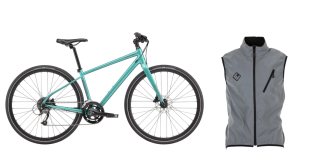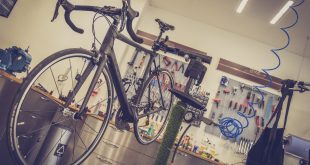As reported on BikeBiz.com at the time, last Saturday saw the launch of folding bicycle brand Tern, and news that the company intends to major on servicing, deliveries and engineering innovation was welcomed by the mixed audience of press, distributors and dealers.
Tern bicycles is headed up by Josh Hon and his mother Florence Shen. They remain the owners of Dahon Global, but Tern is a separate entity and marks a split with Dahon China, the firm run by Hon’s father, Dr David Hon. BikeBiz.com earlier carried a story titled ‘Dahon unfolds’.
The 65 Tern staff are drawn largely from the former Dahon Global team, and many of the distributors and sub-contractor assembly and manufacturing sites have been transposed too.
The company’s debut product range comprises 22 models based on five frame platforms. Retail prices are expected to be comparable with nearest competitors, ranging from $400 to $3,500 (although pricing is likely to be higher in the UK). There will be a three-phase international roll out, with 35 distributors confirmed to date. A UK distributor is expected to be in place by August. The first bikes will be shipped in September, with the rest of the world following closely behind.
It’s a brave move launching a new company to focus on such a niche product – braver still when there is well-established, direct competition. At a press panel session the day after the launch, senior members of the Tern team detailed how the company is so different to its competitors.
Beyond the motto that Tern is making “bikes which fold, not folding bikes”, the three tenets that the company is building its ethos on are servicing, deliveries and execution.
Joshua Hon says that the company will be taking “a responsible approach to servicing”. A secondary supply chain, sourcing parts directly from Taiwan and a European service centre in addition to a Taiwan parts warehouse will reduce both lead times and turn-around times. Spare parts will be delivered anywhere in the world within three days.
“Tern is aiming for best-in-class servicing,” Hon states.
“Several parts on the bikes are interchangeable and there are common technologies across the whole range,” explains Matt Davis, director of sales and marketing at Tern.
“We’ve found that sending a ‘goody bag’ of spare parts to distributors doesn’t always work. By taking this approach, the spare part SKUs should be a lot smaller.”
The servicing strategy takes into account the manufacturing approach too. Hon explains that a visit to Tromm, a bicycle retailer in Amsterdam, asked searching questions of parts durability.
“The guys at Tromm said that all major parts should last five years,” Hon explains.
“We thought that was no problem as we were confident that our products already met that expectation. Then we asked the frequency that the bikes would be used in that five year period. Tromm said every single day. We realised that you need a very different level of servicing and quality to meet that goal.”
That different level stretches from design to manufacture. The joints, for example, are made in the same factory which produces parts for Syntace. The hinges are serviceable, with replaceable NorGlide bearings and no direct contact between the aluminium and steel parts – so a problem with the hinge won’t automatically signal the end of the whole bike.
“Our senior product designer lives in Finland and has never owned a car,” Hon says.
“He cycles through the Finnish winters, through temperatures as low as -25⁰C. He knows what will work on a bike and what won’t. With our team based riding and testing across the globe, we have this whole exotic mix of perspectives driving the product range.”
Tern designers have spent a lot of time examining the durability of the bicycles in their folded position, too. A patented floating linkage removes any additional stress on the steel rod in the hinge clasp, and the rounded edges of the hinges removes sharp edges which can tear carry bags or injure others on public transport. The safety catch itself is made from engineering plastic.
“We want the part to fail if it’s caught on something, so it doesn’t damage the frame,” Hon explains, “But we don’t want it so weak it breaks as soon as you touch it.”
To reduce lead times on delivery, Hon explains that the key is to reduce variation. So Tern bicycles will only be available in three base colours: black, white, and grey. But coloured decals will add to the strong aesthetics of the bikes, and distributors will be able to choose from up to eight combinations.
The theory will be put to the test quickly, as Davis reveals that almost all of the 35 confirmed distributors have already placed orders. Davis says that the company expects to ship 50,000 units in the first six months.
“We want to keep tight control on quality before ramping up production,” he says. “We know we can always build more bikes. The frame manufacturers can easily cope with the order quantities many times over. Increasing production capacity is possible and planned. But we need to ensure the product matches our high expectations in all cases.”
Execution is key. Several of the Tern team use the expression in different contexts, to signify mobility concepts, quality control or engineering innovations.
“Folding bikes are not a revolutionary new concept,” says Hon. “But the fit and finish of our bikes will go far beyond anything currently available.
Superior design and build quality while keeping retail prices accessible will be achievable partially though focus on function and partially on a fresh approach to product lines.
“We’ll refresh a third of the product line each year,” says Hon.
“Like cameras, each bike should last for about three years before it’s replaced. This will allow product designers to work towards designs which will be put into production three years from now, not in six months’ time. They will have time to work on really worthy innovations to produce true distinctions between older and new models.”
The focus on function means the company is cagey when it comes to possibilities such as carbon fibre, belt drives and suspension.
“We take a utility point of view,” Hon explains.
“What do we get in functional terms? There are durability issues and cost implications with carbon fibre, and the disadvantages with those factors cancels out weight savings. That’s not to say we aren’t looking at weight reduction, but when you need to reinforce hinges on a folding bike, the weight savings with carbon fibre are not all that great."
The same thinking is applied to suspension: “We like suspension,” Hon smiles. “But we don’t like cheap suspension. We’re big believers in high-quality, large-volume tyres instead.”
Holes in the headtube for adding accessories have been covered over with a simple concept – the Tern badge hides the holes when accessories aren’t mounted.
“The art department actually designed that badge,” Hon laughs. “They really didn’t want those uncovered holes left in the frames and, when the product designers said they were too busy, the art guys just went ahead and did it.”
——–
MORE PIX: Also at the launch in Taipei was D. L. Byron of Bikehugger.com and his Flickr has lots of pictures of the product presentation.
 BikeBiz Bicycle and cycling retail news
BikeBiz Bicycle and cycling retail news



